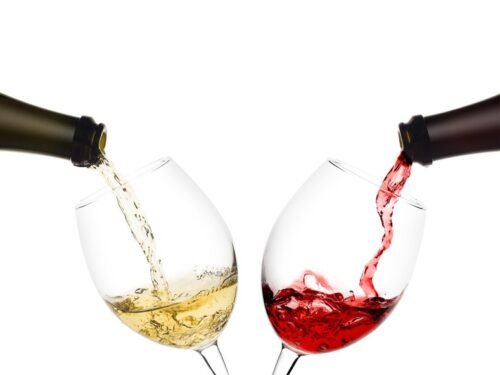Generally, there are three main types of wine: Still, sparkling, and Fortified. Still is by far the largest category and is further broken down into Red, White and Rose. Wines can be single varietals, made with one single grape variety (like Shiraz) or blends produced by mixing different blends together (like Semillion Sauvignon Blanc or Bordeaux). Five main characteristics are generally used to describe wines: Sweetness, Acidity, Tannin, Alcohol and Body.
Let’s start with the biggest category of still wines.
White Wine
The difference between red and white wine is the fermentation time on the skins. Red wine’s colour comes from anthocyanin pigments in the grape’s skin, while white wine is fermented without skin contact. Tannin also comes from the grape’s skins, seeds, and stems, and white wine is fermented without these. The only way tannin develops in whites is through ageing in wooden barrels.
You will find a wide range of white styles, which can be categorised as light, medium, or full-bodied. Find out more about White Varietals here.

Red Wine
Red wine offers diversity in both style and structure, making it ideal for enjoying with or without food. When pairing with dinner, the firmer structure of reds works well with stronger flavours. Fuller-bodied reds generally pair well with denser, heavier foods, while lighter-bodied reds with higher acidity pair well with lighter dishes. Matching the wine’s weight with the food’s richness is a great place to start.
You will find a wide range of red styles, which can be categorised as light, medium, or full-bodied. Find out more about Red Varietals here.

